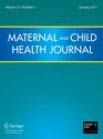New Options for Child Health Surveillance by State Health Departments
April 22, 2011
![]() http://www.springerlink.com/content/q42k007j085312v8
http://www.springerlink.com/content/q42k007j085312v8

|
"For any survey, one of the challenges is to get the questions asked of eligible respondents -- whether that is the children or their parents. The basic problem is to find efficient, cost-effective ways to do this," write the authors of an article published in the April 2011 issue of the Maternal and Child Health Journal. Identifying surveillance data is often an early step in the program-development process. The relative scarcity of data, especially data from studies with sufficient sample sizes and that are collected every year on topics of local interest, has hampered the development of child health programs in state health departments. The article describes four approaches to collecting child health data. The authors explore each approach by describing a single state that uses it. The aim is to provide information that state health departments can use to make informed decisions about whether to increase their child health surveillance capacity and what type of surveillance to develop.
The data systems most widely used for maternal and child health surveillance by state health departments are birth and death certificates, the Pregnancy Risk Assessment Monitoring System (PRAMS), the Youth Risk Behavior Surveillance System, and the Behavioral Risk Factor Surveillance System (BRFSS). The National Survey of Children's Health and the National Survey of Children with Special Health Care Needs also generate population-based child health data. The article describes (1) Colorado's phone-based BRFSS follow-back survey, (2) Rhode Island's PRAMS-based re-interviews, (3) Maine's school-based child health survey (elementary school child health survey combined with dental screening and physical measurements of height and weight), and (4) Oregon's school-based (free-standing elementary school) survey.
The authors found that:
- For some states, the National Survey of Children's Health and the National Survey of Children with Special Health Care Needs provide sufficient information without the cost of data collection, although the sample size for each state is modest, the surveys are not performed every year, and there is no way to ask about topics of local interest.
- PRAMS-based surveys appear to be the least expensive (in part because PRAMS data-management systems are already in place in many states), and they provide longitudinal information about mothers and their children.
- Phone-based surveys provide information about the widest range of ages, at a higher cost.
- School-based surveys provide information that is not otherwise available.
- Both PRAMS-based and phone-based surveys offer the possibility of county-level estimates for large counties, especially by aggregating multiple years of data.
The authors conclude that "state selection of one or more of these surveillance options is complex; every survey is a compromise between available resources and the ideal survey."
Rosenberg KD, Hembroff L, Drisko J, et al. 2011. New options for child health surveillance by state health departments. Maternal and Child Health Journal 15(3):302-309. The abstract is available here.
Article adapted from MCH Alert, © 1998-2011, National Center for Education in Maternal and Child Health and Georgetown University.







